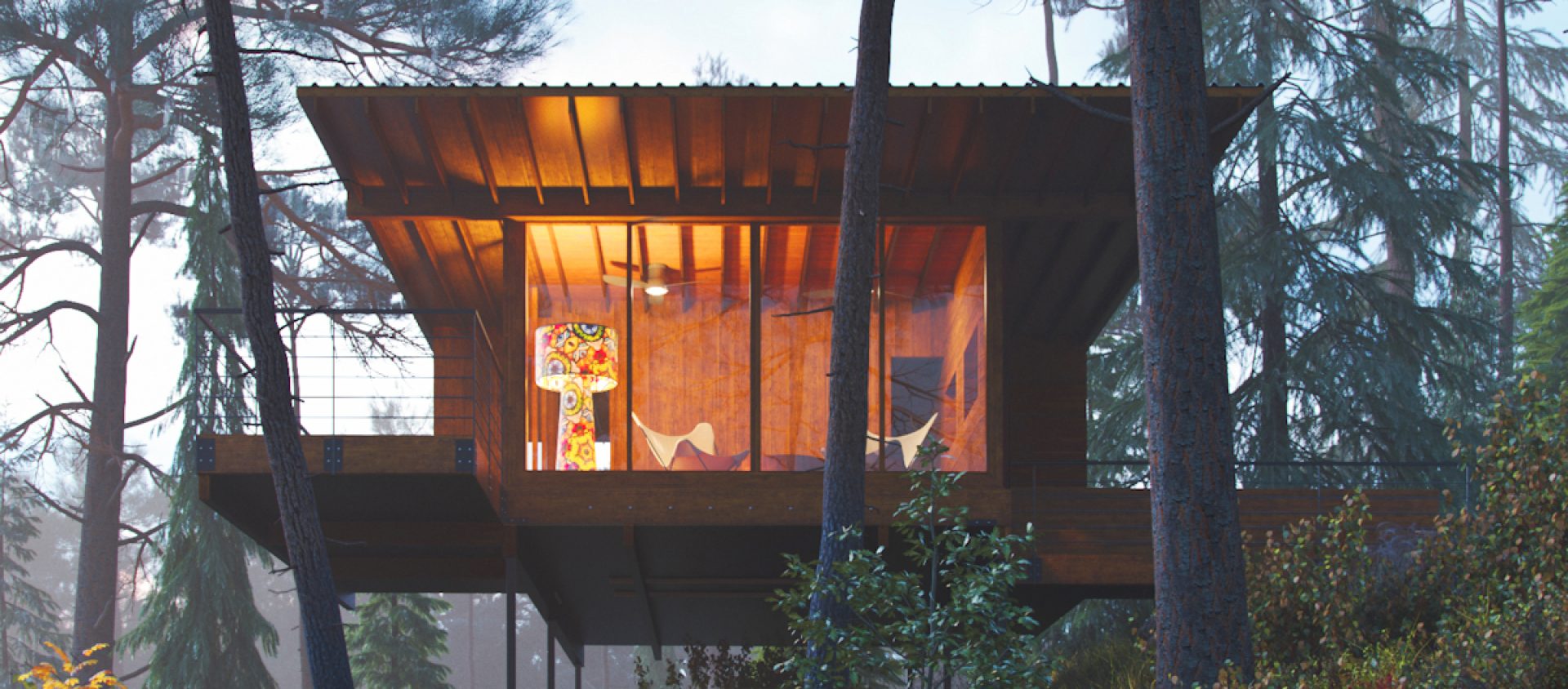Apparently hanging out in the Treehouse isn’t all these humans get up to. Madeleine Robins has a new story, “‘Omunculus,” in the July/August issue of The Magazine of Fantasy and Science Fiction. As your Editor Crow understands it, paper copies have gone out to subscribers and to bookstores, and can be ordered here; eb00k c0pies can also be ordered from Weightless Books starting July 1. Madeleine describes it as a steampunk mashup of Pygmalion and R.U.R., which sounds shiny to us.
Month: June 2020
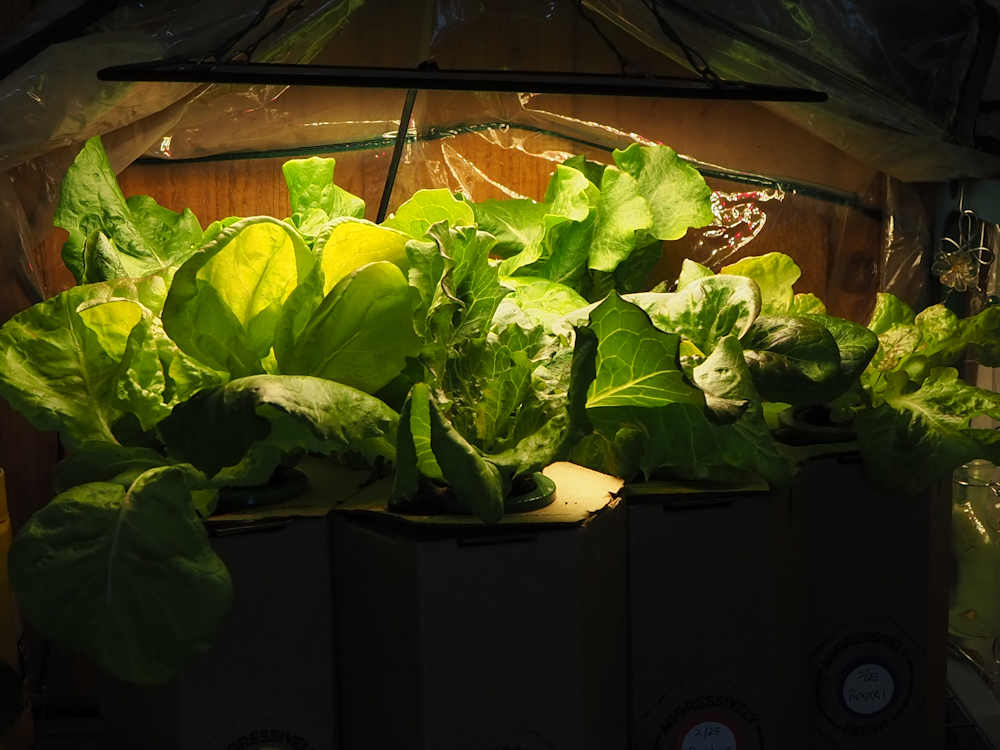
Treading Lightly: Growing Greens
Here in the Treehouse, we have to get by on what’s at hand. This series explores simple, nature-friendly alternatives to conventional products and practices.
When you’re in a treehouse, in the middle of the woods, there is no popping down to the corner store for last-minute whatevers. Our excursions are few and far between, so we are coming up with ways to compensate for the lack of easy access. We find this has also led us to try some more eco-friendly methods – in this case, for acquiring greens.
Gardening at the base of the tree is not an option. Never mind the climbing up and down; anything we might try to grow on the forest floor would be quickly snarfed by the local fauna. But I want lettuce. Fresh green things to eat. Greens that I know are uncontaminated.
So I started growing lettuce in my office. This tower rack sits in the corner, taking up a 2’x3′ footprint. It’s got lettuces up top, seedlings in the center, and bok choy and basil plants on the bottom. All of these (well, not the seedlings yet) produce amazing amounts of wonderful leaves.
Fresh veggies, especially greens, start to lose nutritional value the moment they’re picked. In 24 hours, they’ve lost 90% of their nutrition. By growing them here, I have clean, absolutely fresh greens year-round, with a carbon footprint of…well, probably zero. The lights are LEDs and are powered by our solar system. Each lettuce plant uses around two gallons of water during its lifetime, compared to more than twenty-five gallons it takes to grow a head of lettuce in the ground.
The low carbon footprint is important to me, almost as important as the clean food. That Romaine heart that I used to buy for a couple of bucks had to travel from California, and was probably over a week old, maybe a couple of weeks old, by the time I brought it home. And while a couple of bucks seems fairly inexpensive, it’s a lot more than the cost of my lovely home-grown lettuces.
Growing these darlings is a bit different. You don’t wait for the lettuce to get big and then yank it from the garden. Instead, as soon as it’s big enough, you start harvesting the outer leaves, a few at a time. (I have been known to snack on a leaf now and then.) The plants get harvested this way for two or three months. When they’re tired, they bolt, and I retire them with thanks and a bit of ceremony. Each plant has probably given as much lettuce as two or three commercial lettuce heads, by then.
It’s a different way of gardening, and a different way of interacting with food. I’m very aware of the interdependence between me and my plants. I feed them and make sure they have enough light and don’t get too hot, and in return they feed us. Mutual giving.
On deciding what to read
I was working on a novel (questing in a strange world is not the same as anyone expects it to be, including the inhabitants of the city in which a group of people quest) and the obvious hit me over the head, hard. I’m going to hit you over the head with it, because I’m kind in that way.
Any novel contains world building. We, as readers, enter the world the writer has written.
That was not the head-hitting thought. That’s an element of my current research. A tiny one.
All writers build worlds. Some of us have worlds that look like our own world (for example, in literary fiction) and some have strange worlds where it’s unsafe to walk (in horror, in science fiction, for instance). Most writers find their place in between the extremes (for extremes are harder for readers – I’ll get to this, it’s part of the head-hitting) and their novels fit into a genre partly according to the nature of the world and how it’ written and partly due to the complex processes of marketing and sales.
The reader finds their favourites and devours book after book and everyone’s happy.
Except… that’s not true. Which bit of that last paragraph isn’t true? The ‘everyone’s happy’ bit.
When we don’t want to use too many tricks to lure people into our worlds or when we want the reader to feel comfortable in the world of the novel or when we want the reader to focus on the action and not the background to it, we draw from mainstream culture. We draw, mostly, in fact, white male US culture. It’s the easiest to draw from and it’s also the easiest to market. Continue reading “On deciding what to read”…
Love, Anger, And A Skinned Elbow.
Anyone who has followed my social media for more than a few weeks know that I don’t shy away from having an opinion, nor do I shirk from standing up and making some noise in support of what I think is right. So when the BLM/anti-police brutality protests started in Seattle, I laced up my boots, wrote the number of my bail contact on my arm, and went down to Capital Hill.
That night was not the first time I’d seen the police attack unarmed protesters. It was, however, the first time I’d ever been tear-gassed or shot at. And I discovered – much to my own dismay – that my first instinct is not to run from danger, but to run into it.
(short story shorter: I got my companions out of danger, then went back in, because the cops were using flashbangs as well as tear gas, people needed ear protection, I had a 50-set pack of earplugs, and… Somewhere, my mother is sighing, but also, I think, a little proud.)
ANYway. A little while after that, my boss mentioned that she was attending a training session for basic techniques in militant nonviolent civil protest, sponsored by Valley & Mountain and Washington Poor People’s Campaign: A National Call for Moral Revival. And I thought, “if you’re going to continue to be a chaotic good paladin idiot, you probably need that.”
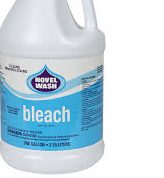
Creeping Back
I work at a museum in downtown San Francisco. Which is to say, for the last three+ months I have been working from home at a museum in downtown San Francisco: The American Bookbinders Museum. The hiatus, as horrible as it has been for all the cultural organizations around the country and in SF in particular, has permitted our staff of three (myself, our Executive Director, and the Collection Manager) to do a thing that otherwise would have been accomplished much more slowly and around the edges of all the other things that have to get done daily: we have crafted an audio version of the docent-led/self-guided tour. Just in time, too. The docent tour is an artifact of pre-Covid life: people crowding around the docent, objects being passed from person to person… your basic contagion nightmare. With an audio tour, visitors can learn about the history and processes of bookbinding via earbuds and their phone, in a low-virus-low-risk way.
So well done us, and the minute the City gives us permission to open, all we have to do is open the doors and we’re ready to go, right?
Actually, no. As the Operations Manager, I handle a weird and diverse range of chores from designing our print materials to ordering toilet paper. So I am in charge of reopening, from the purely practical standpoint. You know what we have to do first?
Flush the pipes. We have several notices from the EPA about what has been happening in our pipes over three months of almost no water being run through them. Short form: still water breeds bacteria. So the first thing I do is open all the taps and flush the toilets repeatedly. Since this is California, where the threat of drought is pretty much a given, this feels distinctly chancy, and yet…
Next: dusting and cleaning in the usual way, and then disinfecting. Which, it appears, I’d been doing wrong all these years. You have to leave your wet disinfectant on the surface you are disinfecting for anywhere from 30 seconds to 10 minutes, depending on the disinfectant (the EPA and the CDC will give you charts of dilution and waiting time, and those bleach wipes that I was using before Covid? They’re great, as long as you use one wipe per about 2 square feet. The minute the wipe no longer feels dripping wet, it’s done, pull another one).
When everything in the museum is clean and disinfected, there will be new signage to put up: the “don’t enter if you’re sick” signs and the “maintain 6 feet of distance” signs, and the “wash your hands, and remember to close the lid on the toilet before you flush” signs. And checklists on display everywhere to show when each area was last cleaned.
In a museum with three employees and a relatively unusual subject matter, this may seem like overkill. Some of it is at least as much for the peace of mind of visitors as for us public-facing employees. But really, the more I learn about Covid and what kind of havoc it can leave in its wake, the more I believe you can’t take shortcuts with this stuff.
If you want me, I’ll be spraying things with a 5% bleach solution.
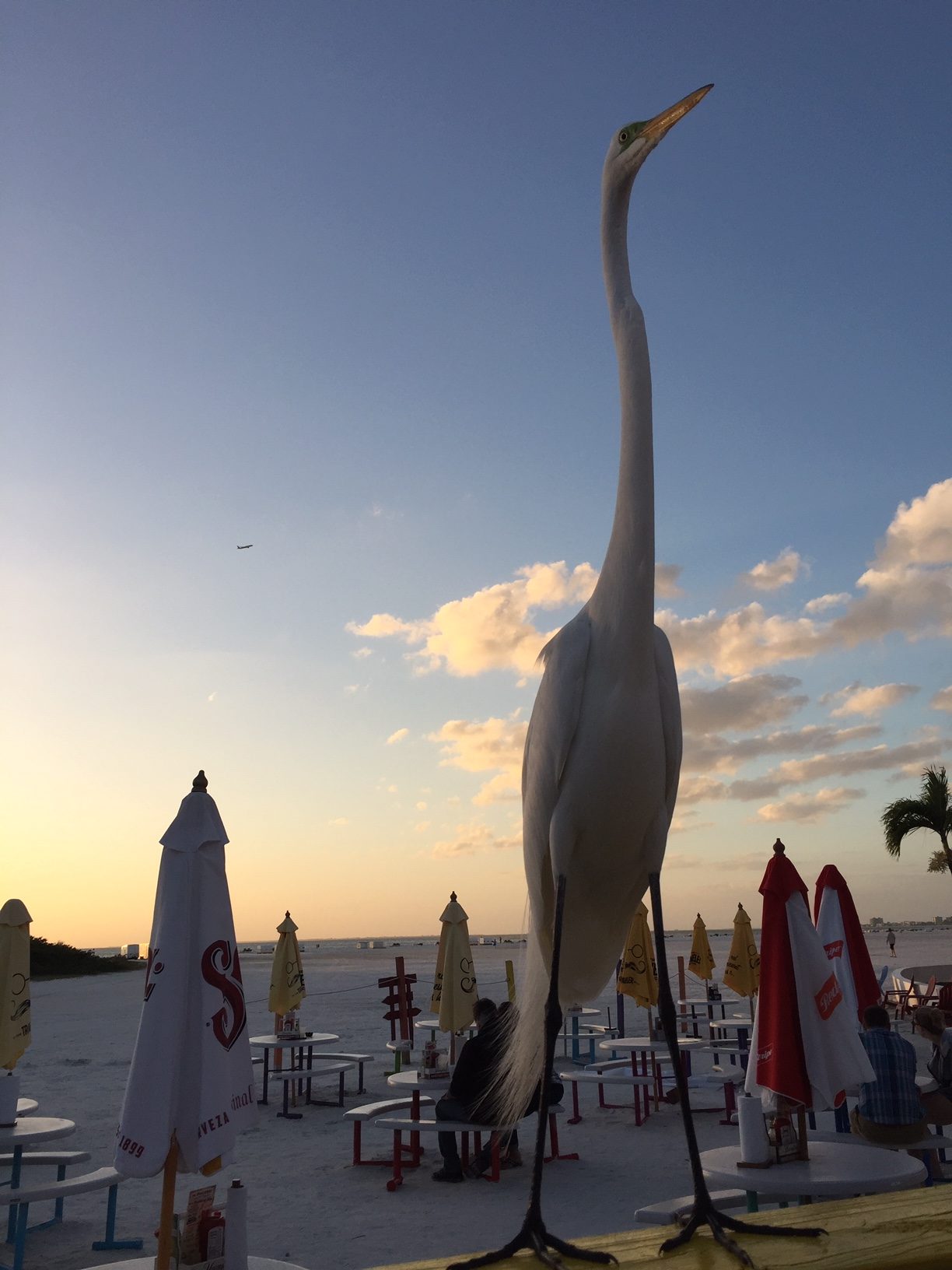
How Many Alligators Are There in Florida? 1.25 Million!
So, what happens when you take a 5th generation southern California native and uproot her 2600 miles away to the semi-tropical southwest Florida gulf coast?
Well … these are the “selected” shells. I limit myself to one handful per trip, only ones I’ve never gotten before. I now know the names of many of these. The orange ones are scallops. Like the little ones we eat.

So I really like Florida. It reminds me of when I was a kid in California. It’s not crowded like L.A. and Orange County have become. There’s still plenty of room for enthusiasm and exuberant displays of individualism.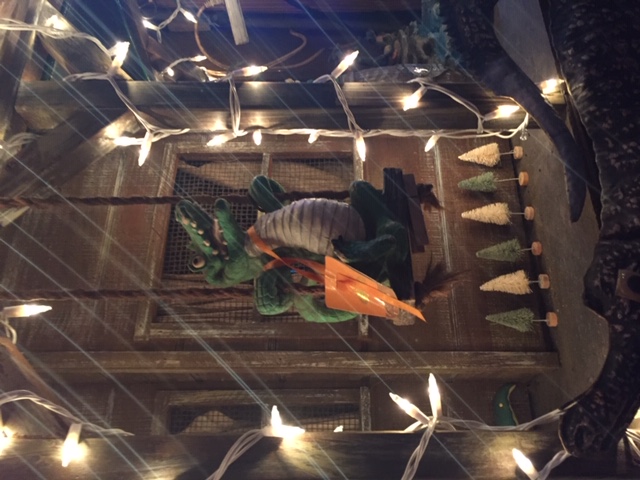
This here is Gatorz in Port Charlotte. A homey, down to earth kind of place.
This here below is a “gator” as in 6-foot alligator I saw crossing a divided 4 lane highway in Englewood. We have a small one that lives in one of our nearby ponds.
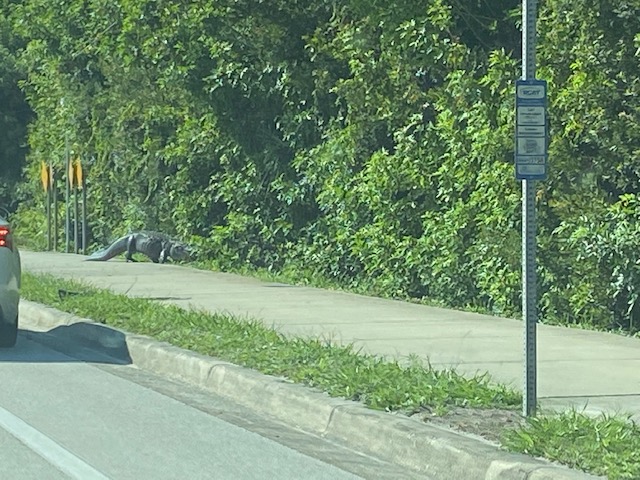
So I was driving down the highway on the way to walk around downtown Venice, FL and this car is stopped in front of me. Why is he stopped? What’s going on … Continue reading “How Many Alligators Are There in Florida? 1.25 Million!”…
Support Clarion and Clarion West
Although both Clarion and Clarion West have cancelled their six-week workshops for this year due to the pandemic, they are holding write-a-thons this year to raise funds and scheduling online readings and panel discussions.
You can choose a writer to sponsor here for Clarion West and here for Clarion. Nancy Jane Moore is participating for Clarion West and you can sponsor her here. Other participating writers are welcome to leave their name and pages in the comments.
If you’d like to write for one of the write-a-thons, both are still accepting signups. Go here to sign up for Clarion and here for Clarion West.
Clarion is featuring a series of conversations on Wednesdays, starting June 24 with a panel moderated by Karen Joy Fowler. You can register for the different sessions here.
Clarion West is holding a Tuesday reading series, which begins on June 23 with Andy Duncan. You can register for those readings here.
Juneteenth
There is talk these days about making Juneteenth a national holiday to mark the end of slavery in this country. And while setting a holiday doesn’t end abusive policing or systemic inequality or even microagressions, the history around Juneteenth makes talking about it a useful focus for addressing the racism that white people want to pretend don’t exist.
It could be argued that the day the Emancipation Proclamation became effective — January 1, 1863 — is a more appropriate holiday, since that’s when slavery became illegal in the states that were in rebellion against the United States (though not in the slave states still in the Union, such as Maryland). Though the day of ratification of the 13th Amendment, which legally abolished slavery in the United States — December 6, 1865 — is even more appropriate, because that’s when slavery was legally abolished across the entire country.
But I think Juneteenth makes the most sense. First of all, it is a celebration started by African Americans, who, as the people most affected, should set such dates. The Black people of Galveston began holding celebrations on June 19, 1866. Unlike most holidays, which are set by those in power and often for political reasons, this one came from the people affected. That makes the day powerful. Continue reading “Juneteenth”…
What We Lose, What We Gain
About 15 years ago most of my jewelry was stolen. None of it was very valuable, although there were some pearls and jade and a little amber, and a lovely pair of moonstone in gold stud earrings that had some monetary value. But, as is the way of things, each piece had a story that was part of my life. That was their real value, and hence the deepest loss. I’d had some of them since my childhood, and some had been gifts from loved ones who’ve since died. Some of it was my mother’s.
I went through the expected rage and frenzy, scouring local flea markets in the forlorn hope that I might spot a piece or two. Of course, I did not. When that stage had run its course, the police report filed (and, doubtless, immediately tossed), anger turned to grief, and grief to acceptance, and acceptance to looking in a new way at what I’d lost.
I wrote in my journal that although the thieves had taken bits of minerals, crystals, shells, fossilized tree sap, they could not steal:
the stories in my mind
the books I’ve written
my children
the redwoods
my dreams
my friends
their kindness and generosity to me
my capacity for joy…
Slowly, over the years, I have acquired a new collection. It’s smaller and more suited to who I am now. I discovered a few things from my mother, tucked away in an old cigar box with some broken bits and things I didn’t wear. Friends and family surprised me with simple, beautiful pieces: a strand of black pearls, an amber pendant, a necklace of silver and garnet dangles, tiny, amazingly delicate garnet earrings. I went through a period of needing “replacements,” and then letting them go. My daughters and I have swapped a number of pairs of earrings. It’s such a delight to pass them on. And to realize I don’t truly need any of this.
What I need are the people I love, and who love me. What I need is to write the stories in my heart. What I need is to work for a better world for everyone. In light of the covid-19 pandemic and the #BlackLivesMatter protest movement, my priorities have sharpened.
I look at what I have, what I have lost, what cannot be taken from me, what I have gained. Yes, I enjoy beautiful things. How much more dear to me are the memories that come with them. And how much more precious are the lives of those who are oppressed and terrified and suffering today.
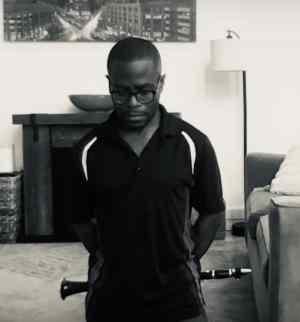
Clarinetist Anthony McGill Takes Two Knees
Following the Boston Pops musicians-at-home tribute to COVID-19 first responders, I was blown away today by this solo performance at home by the New York Philharmonic’s principal clarinetist Anthony McGill, of “America the Beautiful”—beautifully and subtly re-tuned to convey Mr. McGill’s sorrow and anger at racial injustice. Watch and listen to it on a device with good sound; it’s worth it. McGill ends the piece with… well, I’ll let you watch and see.
McGill’s statement inspired this haunting and inspiring rendition of Sebelius’s Hymn from Finlandia, by music students and faculty from four different music schools, all taking two knees in protest of injustice.
The story appears on NPR’s Here and Now, with an interview by WBUR radio’s Robin Young. The interview is well worth a listen:
